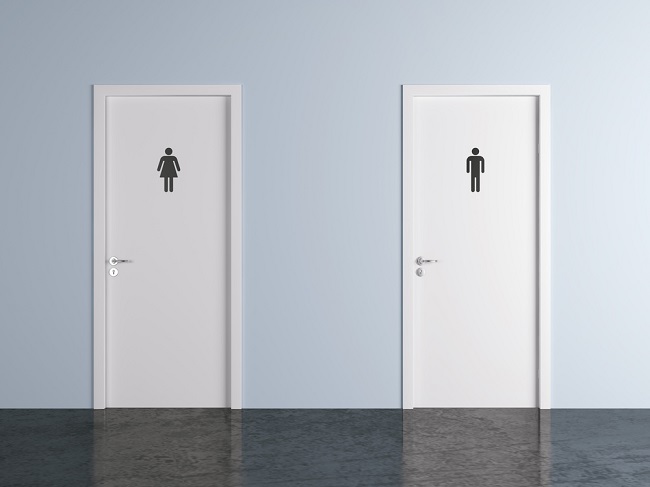
If part of your daily exercise routine consists of running to the bathroom, then it may be time to consider if your number of trips to the toilet is normal?
Kegel8 is here to help you discover if your routine is normal, and how to amend it if not.
So, How Many Toilet Trips is Normal?
Most people urinate between 6-7 times within a 24-hour period after drinking approximately 2 litres of fluids. However, going to the toilet between 4 and 10 times per day can also be normal if you are healthy and content with the number of times you visit the toilet.
The number of your toilet trips also depends on how much you drink in a day and the types of fluids which you drink. Women should have around 11.5 cups of fluids per day, including fluids from water, other beverages, and even food. A great tell-tale sign of hydration is the colour of your urine; if it’s clear then you’re drinking too much, if it’s dark yellow in colour then you’re not drinking enough. The ideal colour you want to achieve is pale yellow.
Some fluids, such as coffee, fizzy drinks, and alcohol can act as diuretics, meaning they can increase your urinary frequency. Diuretics increase the amount of salt and water that comes out of your kidneys, making you pee more in the process. Even though tea and coffee can boost your overall fluid consumption (and help you make it through the day without banging your head against your desk), decreasing their intake may help you pee less often.
Why Am I Going to the Toilet More?
Other than the amount or type of fluid that you drink, there are several conditions that can contribute to your toilet trips, these include:
- Overactive Bladder syndrome - As fluid fills in your bladder, nerve signals that are sent from your bladder to your brain typically trigger your pelvic floor and urethra muscles to relax. This allows your bladder to contract and push urine out. If you suffer from Overactive Bladder, the muscles in the bladder involuntarily contract, even when it’s not full.
- UTI – Urinary Tract Infections occur when bacteria, usually from your bowel, makes its way to your bladder, urethra, ureters, or kidneys. Most UTIs occur in the bladder. In response to the infection, your bladder becomes inflamed and irritated, which can make you feel like you have to go to the toilet 24/7 even if you don’t actually have much urine in your system. If you suffer from a UTI, you need to see a doctor for antibiotics to clear the infection. If you decide to wait it out, a UTI can progress into a kidney infection when left untreated, which can be extremely painful and potentially life threatening.
- Pelvic Floor Disorder – Pelvic floor disorder is the umbrella term for disorders that result from having a weakened or injured pelvic floor. The most common pelvic floor disorders include pelvic organ prolapse and bowel and bladder control problems.
- Interstitial Cystitis – Also known as painful bladder syndrome, interstitial cystitis can cause strong urges to urinate. Along with a persistent need to pee this condition can cause discomfort while your bladder fills up, pain in your pelvis or between your vagina and anus, and pain during sex.
How Can I Cut my Toilet Trips Down?
It’s important that you and your doctor diagnose the cause of your excessive toilet trips before attempting treatment. Some methods that can reduce the number of trips you make to the toilet include:
- Kegels! – Pelvic floor exercises are a guaranteed way for relieving symptoms for anyone suffering with a pelvic floor disorder. Strengthening your pelvic floor muscles can help you gain control over your bladder and bowel. If you struggle to engage your pelvic floor muscles, try using a resistance tool to work against. Physical therapist, Isa Herrera, says you can “normalise the bladder by doing Kegels… holding a Kegel for 15 seconds increases frontal lobe activity, and in this area is where the voluntary inhibitory system for peeing lives, so when you do a Kegel and you hold, it tells your brain ‘I don’t have to pee right now’.”
- Bladder diary – Using a bladder diary can help you understand your overactive bladder. It’s helpful to track the quantity of liquids you drink and when, how often you urinate and how much urine is produced, and how much urine you leak.
- Bladder training – You may have to retrain your bladder in order to cut down the number of trips to the toilet you make per day. Isa Herrera notes that “You can’t give in every time you need to urinate, because it’s going to throw your reflexes off, and it’s going to throw off the rhythm of the bladder.”
- Exclude bladder irritants – Physical therapist, Isa Herrera, notes that you should “avoid all bladder irritants to get your bladder 100% under control. Eliminate carbonated soda, lemon in the water, even chocolate is a big bladder irritant. Others include tomato sauces, coffee, caffeinated tea.”
Let us know which tip helped to relieve your toilet trip frequency in the comments section below!
Sources
[1] Bladder & Bowel Community (2018) Urinary Frequency [online]. Bladder and Bowel Support [viewed 05/11/2018]. Available from https://www.bladderandbowel.org/bladder/bladder-conditions-and-symptoms/frequency/
[2] Mayo Clinic (2017) Water: How Much Should You Drink Every Day? [online]. Mayo Clinic [viewed 05/11/2018]. Available from https://www.mayoclinic.org/healthy-lifestyle/nutrition-and-healthy-eating/in-depth/water/art-20044256
[3] Mayo Clinic (2018) Overactive Bladder [online]. Mayo Clinic [viewed 05/11/2018]. Available from https://www.mayoclinic.org/diseases-conditions/overactive-bladder/symptoms-causes/syc-20355715
[4] Mayo Clinic (2018) Interstitial Cystitis [online]. Mayo Clinic [viewed 05/11/2018]. Available from https://www.mayoclinic.org/diseases-conditions/interstitial-cystitis/symptoms-causes/syc-20354357
[5] National Institute of Child Health and Human Development (2016) Pelvic Floor Disorders: Condition Information [online]. US Department of Health and Human Services [viewed 05/11/2018]. Available from https://www.nichd.nih.gov/health/topics/pelvicfloor/conditioninfo/default
[6] Urology Care Foundation (2012) My Bladder Diary [download]. Urology Care Foundation [viewed 05/11/2018].




